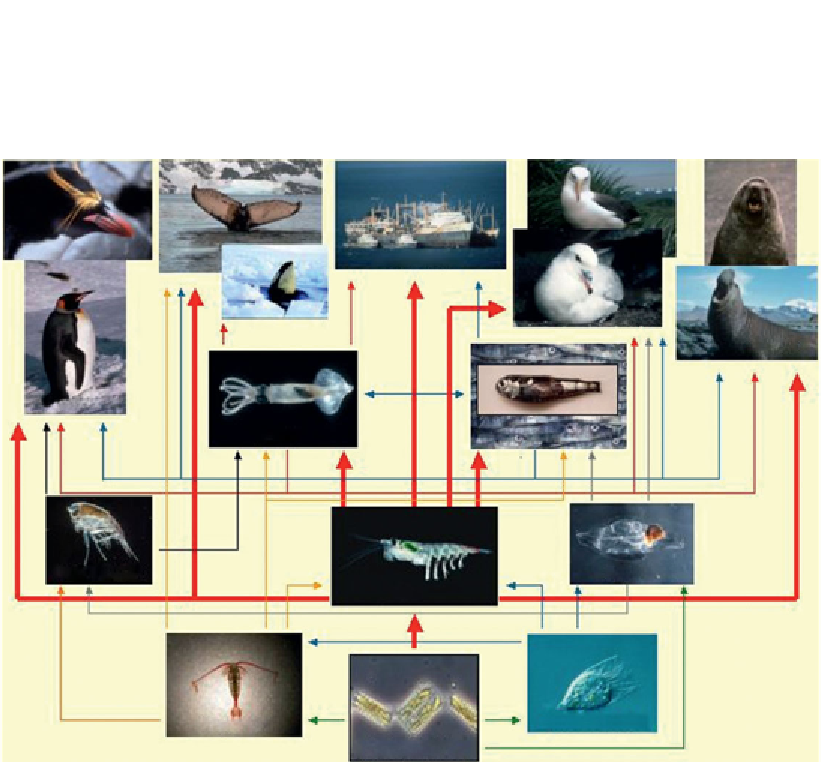Geoscience Reference
In-Depth Information
whales
humans
sea
birds
seals
penguins
squid
fish
amphipods
salps
krill
protozoans
copepods
phytoplankton
Figure 11.6
The Antarctic food web with krill being a central species in the system.
animals. The melting of sea ice in spring results in the strati
cation of the upper
water column and release of nutrients that promotes primary production. Parts of
Antarctica have extended periods of darkness and at times 24-hour daylight. As a
result the Antarctic marine environment experiences many large seasonal
variations, matched only in the Arctic.
The Southern Ocean marine environment changed fundamentally about
30million years ago when the Drake Passage opened and the Southern Ocean
cooled. Biota have since evolved in near-total isolation. They have had to survive the
challenges of the Milankovitch cycles when, at glacial maximum, it is believed that
many if not all the ice sheets extended to the continental shelf. There is compelling
genetic evidence that many animals have persisted in Antarctic waters throughout
this time and there is no geological evidence for climate-related extinctions of
marine taxa on the timescales of the 23 000, 40 000 and 100 000 year Milankovitch
cycles. Therefore, there must have been suf
ciently large niches for the fauna to
survive but how this was achieved remains a mystery.



Search WWH ::

Custom Search